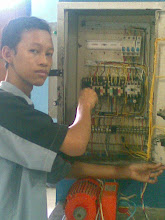First Check the tag. It should say if it can be ironed and also tell you what setting to use on the iron.
Second Fill the iron's water reservoir (if it has one) with rainwater or distilled water to minimize mineral buildup on the iron and on the clothes.[1] If you want to add a pleasant scent to your clothes, soak a few sprigs of lavender into the water before you put it into the iron.
Third Set the iron on the right setting. Plug it in and let it sit upright. Wait until it heats up. Many irons have a little light that will light up to show the iron is heating up and ready to start. It will go out when the iron has reached the right temperature.
If you're ironing more than one garment and they require different settings, organize the garments so that you start with the coolest setting first and work your way up. It's much faster to heat up the iron than to wait for it to cool off, and if it's not cool enough you could ruin the fabric.
Fourh Place a piece of aluminum foil on the ironing board. The foil will heat up so that it's almost like ironing the garment from both sides at the same time. You can also purchase a silver ironing board cover that accomplishes the same task.
Fifth Put the piece of clothing on the ironing board. Put it wrong side out (so that the side that touches the iron is the same side that touches your body). If the fabric is cotton or silky rayon, put the right side out instead.
Sixth Spray starch. This is optional, but will make your clothes feel more "crisp". You can make your own starch spray by completely dissolving one tablespoon of cornstarch in two cups of water. Put this solution into a clean spray bottle and lightly mist the fabric right before you iron on that spot.
Then Start ironing. Always keep the iron moving; never let it sit still over any part of the garment. If there's a stubborn wrinkle that refuses to iron out, spray some water on it and iron over with steam. Begin at the big areas and finish with the corners. Once you iron a section, move the garment away from you. If you move it towards you, it may wrinkle as you lean over it and possibly push it against the ironing board.
acrylic knits - since they can warp when wet and warm, let the fabric cool and dry completely before moving it
corduroy - hold the iron just above the garment so that the steam thoroughly penetrates the fabric, then smooth it along the ribs with your palm.
pleats - hold them in place with paper clips (just be careful that the clips don't snag or damage the fabric)
sleeves - use a sleeve board; insert the sleeve board in the sleeve so that you can iron it without creases; if you don't have a sleeve board, roll up a towel and put it snugly inside the sleeve, then iron.
Next Turn the fabric over and iron the right side. This will ensure that the right side is immaculate and any creases you accidentally create are ironed to the back, where it matters less. However, ironing both sides is optimal. If you used the aluminum foil as outlined earlier, you may not need to iron the other side. Cotton and silky rayon shouldn't be ironed on the wrong side at all. Polyester can be ironed on either or both sides; if in doubt, iron the wrong side and stop there.[7] For delicate fabrics or those with vibrant colors you'd like to preserve, try to get all the wrinkles out by ironing the wrong side (ironing on the right side can give dark colors an unwanted sheen.
At Last Hang or fold the garment immediately after ironing. Don't forget to turn off the iron and empty the water out. Leaving water in the iron for extended periods of time can cause rust to form inside. That rusty water can shoot out with the steam next time and stain your clothing.
skip to main |
skip to sidebar
followers
Entri Populer
-
Dalam sistem pengendali elektromagnetik ada dua diagram gambar yang sering digunakan, yaitu diagram kontrol dan diagram daya. Yang termasuk...
-
A. Rangkaian Utama (tanpa pengasutan) B. Rangkaian kontrol C. Tata letak sistem pengendalian D. Prinsip kerja pengendalian Moto...
-
I.BAGIAN -BAGIAN MOTOR 3 FASA Motor 3 fasa pada dasarnya terdiri dari Stator yaitu bagian yang diam (statis) dan Rotor yaitu bagian yang b...
-
Pengertian K3 (Kesehatan dan Keselamatan Kerja) adalah secara filosofis suatu pemikiran dan upaya untuk menjamin keutuhan dan kesempur...
-
1. Ahli Keselamatan dan Kesehatan Kerja (K3) • Peraturan Menteri Tenaga Kerja dan Transmigrasi R.I. No. Per.03/MEN/1978 tentang Penunjuk...
pencarian data
Arsip Blog
Mengenai Saya
another page blogger
- http://lutfiyanti.blogspot.com/
- http://klistrik.blogspot.com
- http://overloadlistrik.blogspot.com
- http://listrikcinta-damai.blogspot.com
- http://instalation-electric.blogspot.com
- http://nurulvia.blogspot.com
- http://goundingsystemsmknesaba.blogspot.com
- http://ipunkkawikire.blogspot.com
- http://jamaah-listrik.blogspot.com
- http://listrikhighvoltage.blogspot.com
- http://habibshaleh.blogspot.com
- http://listriknesaba.blogspot.com
- http://listrik3fase.blogspot.com
- http://listrik-stroom.blogspot.com
- http://plc86.blogspot.com














0 komentar:
Posting Komentar